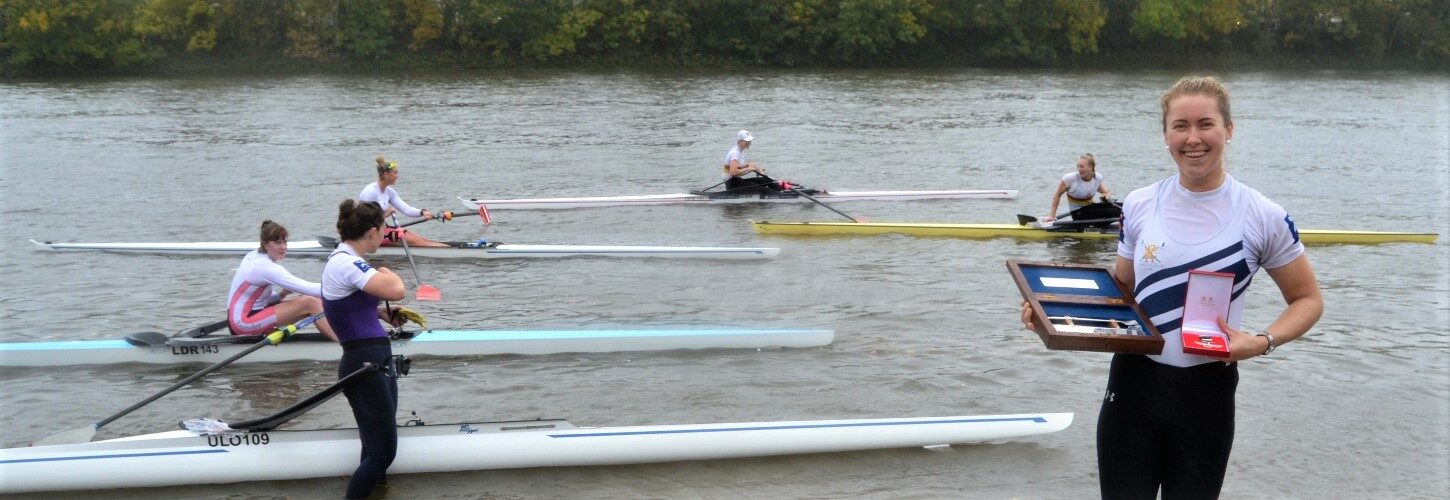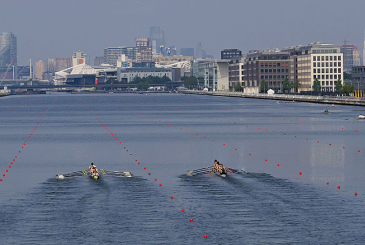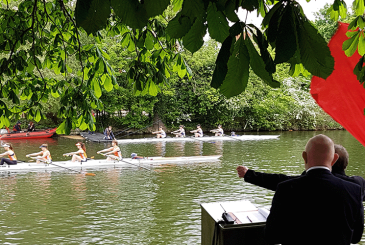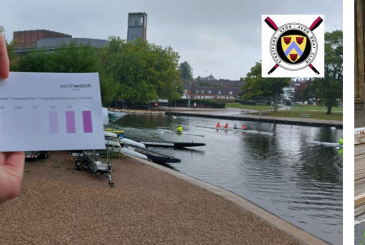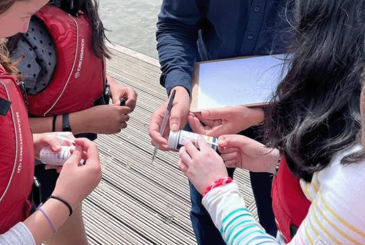The 190th year of the Wingfield Sculls saw a quality field with GB rower Mathilda Hodgkins-Byrne and U23 gold medallist Matt Haywood sculling to victory. Tim Koch reports
We are all adapting to the “new normal” and rowing events are no exception. On 29th October, six women and six men took part in the 2020 versions of the women’s and men’s Wingfield Sculls on a long and challenging Thames Tideway course.
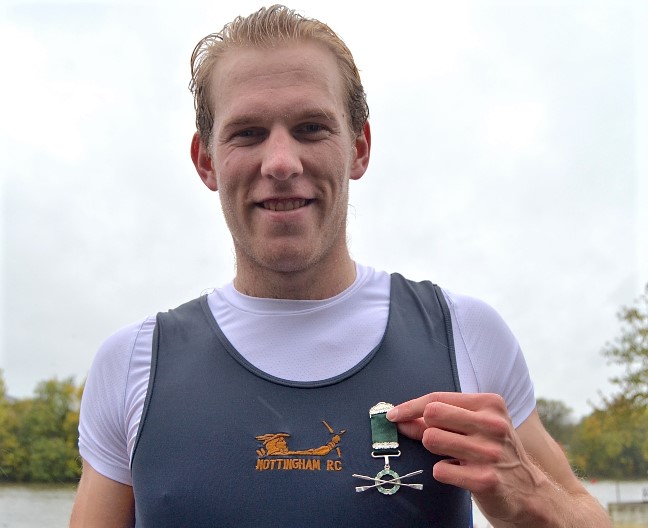
The historically prestigious Wingfield Sculls began in 1830 when Henry C Wingfield presented a pair of silver sculls to be competed for annually by the best male amateur scullers of the day. Since 2007, the women’s Wingfields have been run alongside the men’s event; the new race incorporating the previously defunct Women’s Amateur Sculling Championship.
This year, the lack of competitions since March resulted in entries of both quality and quantity. All 12 scullers had international experience and had to win their place through a time trial after 17 men and nine women signed up.
In the men’s trial, the six successful scullers were all within 10 seconds of each other at the end. The women’s times put 2017 Worlds bronze medallist Mathilda Hodgkins-Byrne 15 seconds ahead of her nearest rival Hannah Scott, but the remaining five also finished within a ten-second time frame.
Thus, the most exciting and hardest fought Wingfield races in a long time were in prospect, particularly when allowing for the difference that side-by-side racing can make and the fact that, when racing a single scull on the Tideway, steering is as almost as important as speed and a possible capsize is always only one stroke away.
A sculling race for six was always going to be “socially distant” and only some relatively minor changes were needed to make the event COVID compliant. Further, the closure of Hammersmith Bridge meant that the course was not the traditional four-and-a-quarter miles from Putney to Mortlake but the three miles between St Paul’s School and the University of London Boathouse.
On race day, the flow of land water against the tide made for a slack stream and a less obvious course. The conditions were wet but reasonably benign – something that probably brought great relief to the competitors and also to the umpire and 1976 winner, Graeme Mulcahy.
“Charlotte and Saskia absolutely flew out – I knew that I had to keep with them”
In the women’s race, Mathilda Hodgkins-Byrne, in Reading RC colours, sculled confidently to victory followed by, in order, Charlotte Hodgkins-Byrne (University of London), Hannah Scott (Leander), Katie Wilkinson-Feller (Tideway Scullers), Saskia Budgett (Tideway Scullers) and Georgina Brayshaw (Leander). The winning time was 17 minutes 11 seconds, but all the women finished within 27 seconds of this.
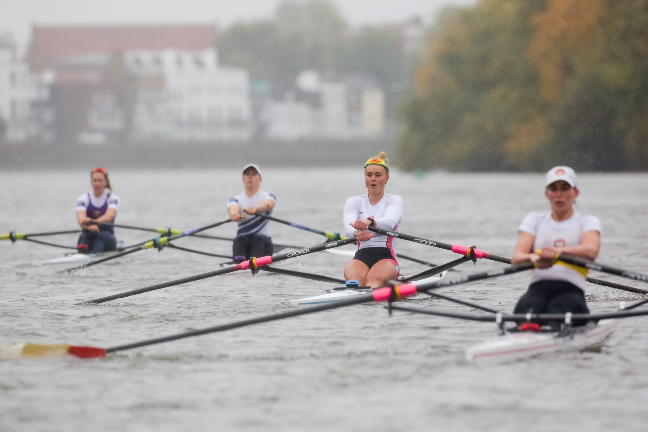
Mathilda, a second-time winner, afterwards described the race: “It was really exciting. Charlotte and Saskia absolutely flew out – I knew that I had to keep with them and stay in my rhythm which I did… and also managed to clear Hannah – which was difficult.
“About 750 [metres] before Barnes, I was able to control the race and bring the rate down. I knew that I’m stronger over a long distance.”
Strangely, this was the first time that Mathilda has raced in singles against her sister, Charlotte. However, with the rules allowing competitors to receive steering signals from following launches, she found that there are limits to sibling rivalry.
“I could see that Hugo was steering Charlotte into me and Reedy was steering me into Charlotte and we were defiantly yelling at each other at one point!
“Charlotte has just admitted that, had it been anyone else, she would have tipped me in…!”
The men’s Wingfield Sculls provided some great sport. George Bourne took the initial lead, pursued by Angus Groom – European bronze medallist in the men’s quad last year – and U23 gold medallist Matt Haywood.
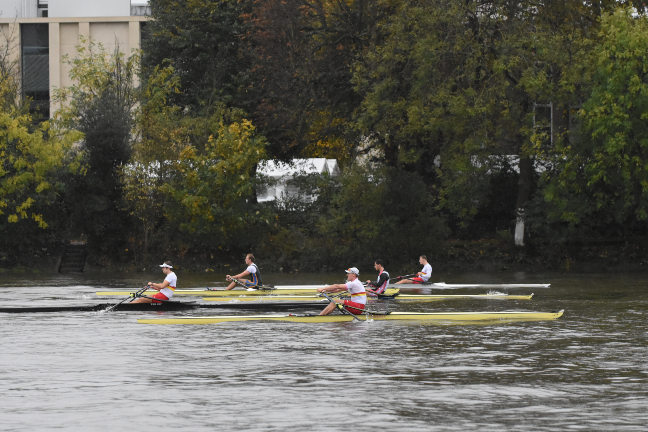
By the end of Chiswick Eyot, Angus had gone in front, followed by Matt and then George. With the water getting worse between Chiswick Pier and Bandstand, the field started spreading out and Angus and Matt drew away from the rest.
“I tried to stick with Angus and George for the first 2k and then just put the hammer down”
Conditions improved after Barnes, and Matt began to challenge Angus’ lead moving past him as they approached the Ship pub.
When Haywood took the lead, five-times Wingfield winner, Alan Campbell – 2012 Olympic bronze medallist in the single sculls – said on the live feed commentary: “On form, you would say Angus Groom in terms of seniority and fitness, but this is a test of watermanship and preparation.
“It’s not always the fittest, strongest sculler that comes out in front; it’s the one that’s prepared and done this the right way.”
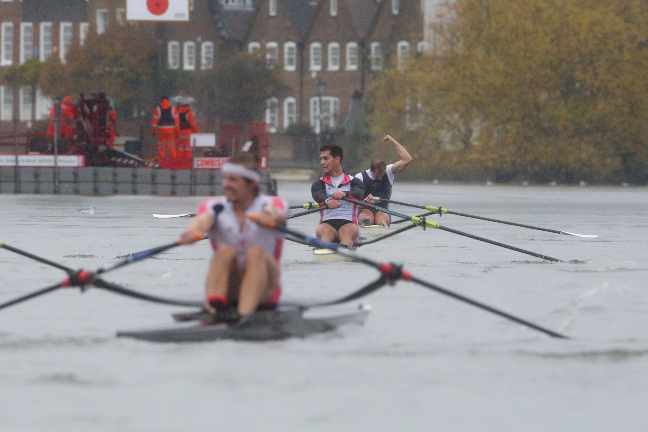
Representing Nottingham RC, Matt prevailed becoming the 95th Wingfield Champion with a time of 17 minutes, four seconds. He was followed by Angus Groom (Leander), then 2019 Wingfield Champion Sam Meijer (Tideway Scullers), Victor Kleshnev (Leander), George Bourne (Tideway Scullers) and Calvin Tarzcy (Tideway Scullers).
Back on land, Matt made it sound simple, saying: “I tried to stick with Angus and George for the first 2k and then just put the hammer down – about 500 before Barnes Bridge.
“Between Barnes and Chiswick, I just had to work hard. Around the Ship, Angus was having a few problems and I just moved away.”
It is strange that races that earn the winners the very grand titles of “The Champion of the Thames” and “The British Amateur Sculling Champion,” should be so little-known in the rowing community. However, this may soon change.
At national squad level, there is currently more support for the event than there was previously. Plus, one of the Wingfield’s quirks is that it is run solely by past winners and the latest “Champions” are, naturally, young and tech-savvy. They are using social media to bring a 190-year-old event to a new generation — notably by today’s live-streaming, watched live by 600 people and by 3,500 within 12 hours.
Long-serving Wingfield’s secretary, Wade Hall-Craggs, says that he has no intention of standing in the youngsters’ way as he also hinted at exciting possible future changes.
Mr Wingfield’s creation looks good for another 190 years.
Photos: Ben Rodford and Tim Koch


